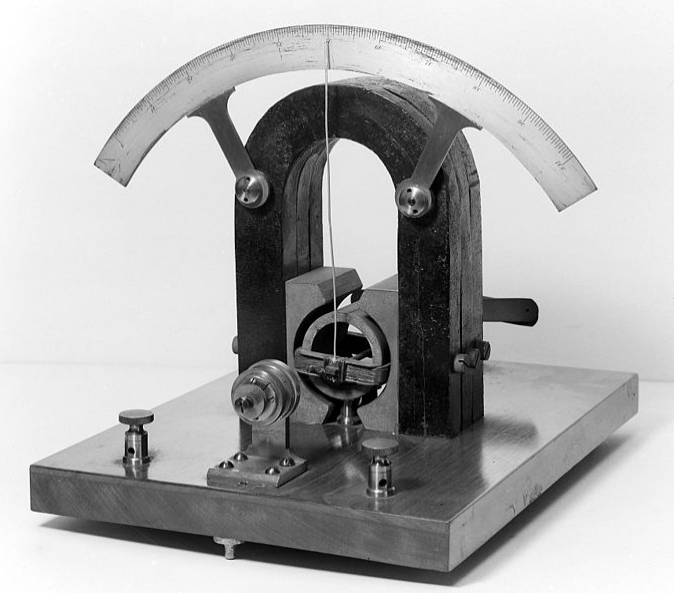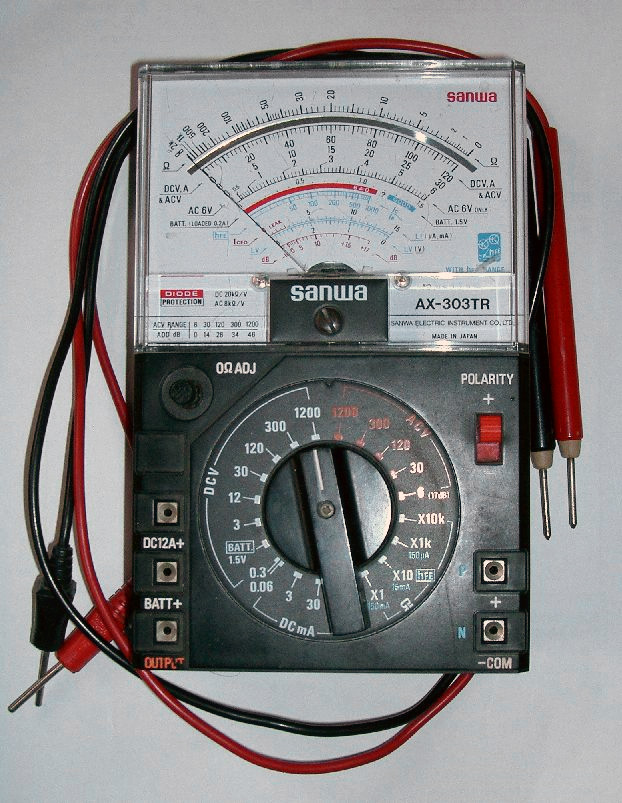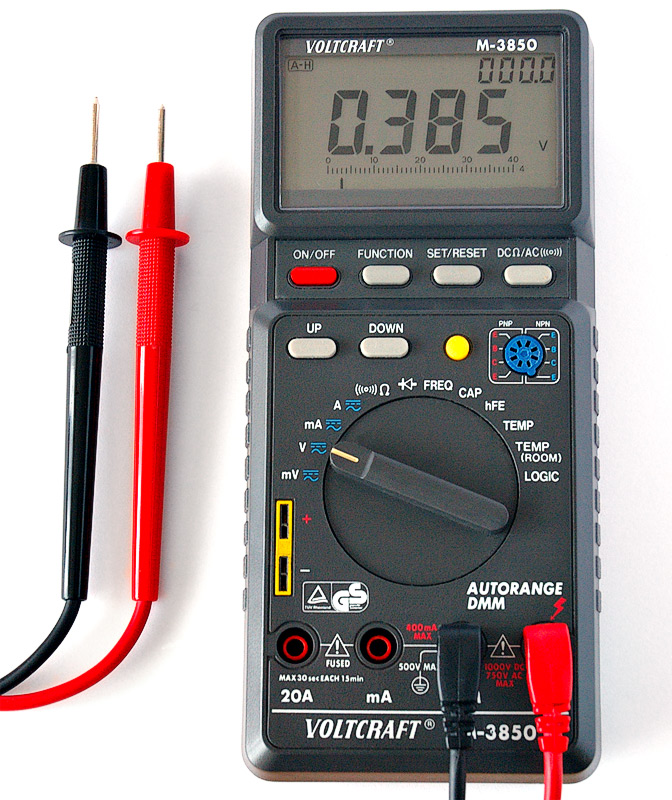| Vocademy |
Practical Electronic Measurements
The Multimeter
The most common device for measuring electricity is the multimeter. A
multimeter can measure voltage, current and resistance. Before the
1970s a multimeter was often called volt-ohm meter or VOM. They come in
two main types, analog and digital. A digital multimeter is often
called a DMM.
An analog multimeter is based on the d'Arsonval galvanometer. This works by passing a current through a coil of wire that is in the field of a permanent magnet. The magnetic field that develops around the coil (caused by the electrical current passing through the coil) interacts with the field of the permanent magnet. This causes the coil to rotate. A small spring controls how far the coil can rotate.
An analog multimeter is based on the d'Arsonval galvanometer. This works by passing a current through a coil of wire that is in the field of a permanent magnet. The magnetic field that develops around the coil (caused by the electrical current passing through the coil) interacts with the field of the permanent magnet. This causes the coil to rotate. A small spring controls how far the coil can rotate.

| An early d'Arsonval
galvanometer showing the magnet and rotating coil |
The more current that passes through the coil, the farther the coil
rotates. A needle attached to the coil indicates the amount of current
passing through the coil.
The indication of an analog meter is always a measure of the electrical current passing through the coil. However, since there is a direct relationship between voltage and current, the meter can be designed and marked to indicate voltage.
Several factors that limit the accuracy of an analog meter. A good analog meter is accurate to within 2% when the needle is at the maximum reading. The same meter will have an accuracy of only 20% when the needle is at 1/10 of the scale. There is often a mirror on the scale of an analog meter. When reading such a meter, make sure the needle lines up with its reflection in the mirror. This reduces error due to observing the needle at an angle (parallax error).
The indication of an analog meter is always a measure of the electrical current passing through the coil. However, since there is a direct relationship between voltage and current, the meter can be designed and marked to indicate voltage.
Several factors that limit the accuracy of an analog meter. A good analog meter is accurate to within 2% when the needle is at the maximum reading. The same meter will have an accuracy of only 20% when the needle is at 1/10 of the scale. There is often a mirror on the scale of an analog meter. When reading such a meter, make sure the needle lines up with its reflection in the mirror. This reduces error due to observing the needle at an angle (parallax error).

|

|
| An Analog Multimeter |
A Digital Multimeter |
An analog meter requires that the current passes through the coil of
the d'Arsonval movement in the correct direction. If the current goes
the wrong way, the needle will move the wrong way hitting the stop peg
at the lower end of the scale. You must observe the polarity (red probe
to the more positive voltage, etc.) when using an analog meter.
When reading a voltage that fluctuates, it is easy to follow the needle of an analog meter and get a meaningful reading. A digital meter will seem to display random numbers if the voltage fluctuates. For fluctuating signals, an analog meter is better than a digital meter.
A digital meter uses voltage-controlled oscillators and digital counters (or similar circuitry) to measure voltage. A digital meter always measures voltage. However, whenever a current is forced through a resistance, a predictable voltage differential develops across that resistor. When measuring current, the meter passes the current through a precision resistor and measures the voltage that develops across it. This is displayed as a current reading.
A digital multimeter (DMM) is much more accurate than an analog meter and is the best tool for measuring electricity. With a DMM you don’t necessarily need to worry about the red and black probes. If you accidentally reverse the probes the meter will just place a minus sign ahead of the reading.
When reading a voltage that fluctuates, it is easy to follow the needle of an analog meter and get a meaningful reading. A digital meter will seem to display random numbers if the voltage fluctuates. For fluctuating signals, an analog meter is better than a digital meter.
A digital meter uses voltage-controlled oscillators and digital counters (or similar circuitry) to measure voltage. A digital meter always measures voltage. However, whenever a current is forced through a resistance, a predictable voltage differential develops across that resistor. When measuring current, the meter passes the current through a precision resistor and measures the voltage that develops across it. This is displayed as a current reading.
A digital multimeter (DMM) is much more accurate than an analog meter and is the best tool for measuring electricity. With a DMM you don’t necessarily need to worry about the red and black probes. If you accidentally reverse the probes the meter will just place a minus sign ahead of the reading.
Using a multimeter
A multimeter has two probes, one red and one black. I avoid calling the
red probe positive and the black probe negative. This is because the
red probe will not necessarily be connected to a voltage that is more
positive than the black probe. If the red probe is connected to a
higher voltage (a more positive voltage) than the black probe the meter
will display a positive reading. If the red probe is connected to a
lower voltage than the black probe, the meter will display a negative
reading (with an analog meter the needle will move the wrong way).
A multimeter is usually used to measure either voltage, current or resistance. Each of these is measured using a different technique.
When measuring an unknown voltage or current, always set the meter to the highest range. Some digital meters don't have range settings. With such an auto-ranging meter just select the property you want to measure (volts, amperes or ohms).
A multimeter is usually used to measure either voltage, current or resistance. Each of these is measured using a different technique.
When measuring an unknown voltage or current, always set the meter to the highest range. Some digital meters don't have range settings. With such an auto-ranging meter just select the property you want to measure (volts, amperes or ohms).
Multimeters